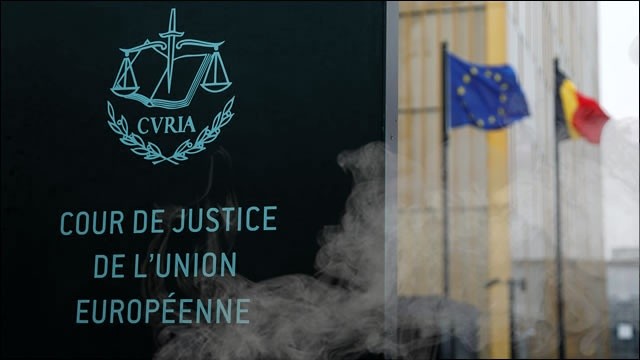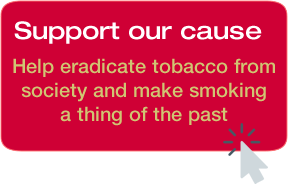Criticism of battle against the rigged cigarette unfounded
17 February 2020

From an unexpected quarter comes criticism of the battle by the Youth Smoking Prevention Foundation (SRPJ) against “rigged cigarettes”. In an email to the SRPJ, Belgian anti-smoking expert Luk Joossens calls it “not worth the trouble”. Lawyer Phon van den Biesen believes that Joossens is overlooking a number of things. “If cigarettes are less poisonous and carcinogenic, then over the long term that will produce 5,000 fewer deaths per year in the Netherlands.”
By Frits van Dam and Rob Giebels*
European tobacco legislation stipulates that when a smoker smokes a cigarette, he should ingest no more than 10 milligrams of tar, 1 milligram of nicotine and 10 milligrams of carbon dioxide. The legislation also states that measurements of the quality of the smoke must be made using a specific method, known as the ISO method. The Netherlands Institute for Public Health (RIVM), which is responsible for measuring cigarette emissions, and the Youth Smoking Prevention Foundation (SRPJ) have strongly criticized this method. When the ISO method is used, clean air is sucked in through holes made in cigarette filters by the tobacco industry. This allows it to rig the results (hence the name “rigged cigarette”). The machine is actually measuring highly diluted smoke, and test results therefore show emissions as falling well within the legal maximum. But according to the RIVM smokers actually ingest two to three times as much tar, nicotine and carbon monoxide as permitted by the legislation, because they close off the holes with their lips and fingers. Cigarettes are therefore far more poisonous, far more addictive and far deadlier than legally permitted.
Canadian Intense
There is another method of measurement that mimics human smoking behaviour far more closely, known as Canadian Intense. The filter holes are blocked, so the same situation arises as during normal smoking behaviour. The RIVM believes that the Canadian Intense method comes much closer to the reality of smoking than the ISO method laid down in law and promoted by the tobacco industry, and immediately after making this discovery it raised the alarm.
The SRPJ asked the Netherlands Food and Consumer Product Safety Authority (NVWA) to enforce the maximum legal levels effectively by using the realistic Canadian Intense method. The NVWA rejected this request “because the law requires us to use the ISO method”. At that point the SRPJ, after first appealing to the Ministry of Health, Welfare and Sport (VWS) without success, turned to the courts.
Court ruling
On 7 February the Administrative Court in Rotterdam reached a pioneering verdict on the rigged cigarette. The court essentially adopted the position of the SRPJ in every respect and expressed strong doubts as to whether the now statutory ISO method of measuring emissions from cigarettes produces results that are in accordance with other statutory regulations. It referred in particular to the maximum quantity of poisonous substances that a smoker is allowed to ingest and to the European Charter, in which human rights are set down, including the right to health. The court is of the opinion that the obligation of the EU and the Dutch state to protect public health has been seriously undermined by the use of the current method. There are after all good reasons why the maximum legal amounts are set down in law. The court therefore requested a ruling on the matter by the European Court of Justice.
There were many expressions of delight at the outcome of the Rotterdam hearing. Daily newspaper Trouw reported the finding on its front page and Secretary of State Paul Blokhuis told Trouw, “The sooner we put an end to these rigged methods the better, as far as I’m concerned. The Youth Smoking Prevention Foundation and I have the same objective. I will keep on lobbying for a change to European rules.”
Joossens’ criticism
Criticism of this course of events came from an unexpected quarter, from someone we generally greatly respect, Luk Joossens, tobacco expert and author of De tabakslobby in België (The Tobacco Lobby in Belgium). In an email to the chair of the SRPJ he addresses the whole issue of the rigged cigarette. He says it goes back to the 1960s and 1970s, when the tobacco industry introduced tiny holes in the filters of cigarettes so that manufacturers could claim their cigarettes were “light” or “mild”, because a smoker would ingest less tar. Those brands have since been banned, and packaging no longer states how much tar the manufacturer believes a smoker will ingest. “The consumer is no longer guided by the tar content, because it can no longer be found on the packaging,” Joossens says. “To advocate a new measuring system now represents a step backwards, to the situation in which there was talk of a slightly better or slightly worse cigarette. That’s not what we should be after. We really don’t want to go back to a classification system that suggests there are bad and less bad cigarettes.”
According to Joossens, Europe will not agree to a review of its methods of measurement, “because aside from the Netherlands, it’s not supported by a single country or a single NGO”.
Not a priority
Joossens was pleased by the Dutch campaign surrounding the rigged cigarette, since it brought about a change in public opinion. “It’s just a shame that it focuses on a plan that is not a priority. It prioritizes something that has no impact.” He would prefer that instead of advocating an adjustment to the method of measurement, campaigners focus on the abolition of the filter. “That ought really to have happened twenty years ago.”
Joossens thinks that attempts to change measurement methods in European legislation will not meet with success, because the European Commission would first have to make a proposal. He regards this as unlikely. Next, enough member states would have to agree with the Netherlands and opt for the Canadian Intense method. Joossens believes that the Netherlands stands alone. In his estimation there is very little chance of legislation being passed and he therefore regards such efforts as “not worth the trouble”.
Less poison, fewer deaths
Lawyer Phon van den Biesen finds Joossens’ line of argument regrettable. “What’s lacking is the thought that cigarettes without two or three times (and peaks of up to five times) as much nicotine, and that do not deliver two or three times as much tar as legally permitted, are less addictive and greatly reduce the likelihood of cancer. Toxicologist Prof. Martin van den Berg calculated as recently as last year that the Netherlands would see 5,000 fewer smoking-related deaths per year in the long term if the legally permitted maximum levels were carefully monitored and upheld. We do not regard this as ‘low-hanging fruit’, especially since it’s a matter of enforcing a level of protection to which the citizen, each one of us, has a right. That is a laudable battle to fight.”
Moreover, the reaction of the tobacco industry during the court hearing in Rotterdam showed that the method of measurement does indeed have an impact on its revenue model. The chair of the Vereniging Nederlandse Sigaretten- en Kerftabakfabrikanten (VSK) said that the tobacco industry does not have a preference for any particular method and that it would have no objection to the introduction of the Canadian Intense method, “as long as the maximum level of emissions is adjusted at the same time”.
By “adjusted”, the VSK means that the maximum permitted poison content of cigarettes would be increased. That way manufacturers would not have to alter the composition of their cigarettes and could rest assured that smokers would ingest just as much poison as they do now from rigged cigarettes.
Same plea
“The plea for the abolition of the filter amounts to the same as a plea for the use of the Canadian Intense method, so it isn’t immediately obvious to me why that would be politically promising whereas the introduction of Canadian Intense would not,” Van den Biesen says. “In any case, such an approach is no less dependent on the political will of the Commission and the member states. We mustn’t forget that we are taking a completely different route, one that is not political but commonsensical and dull: we simply argue that the Dutch and EU governments must be held to their own legal standards and this is being thwarted by the tobacco industry through the use of a misleading method of testing. A request for the enforcement of an existing norm and a ruling by the court with instructions to that effect is not dependent on anyone’s political will and does not lead, in any logical way at least, to a simultaneous raising of that norm, because a court finding is non-negotiable and therefore does not automatically lead us into a political quagmire.”
EU legislation
The court in Rotterdam has requested a ruling from the European Court, which is in a position to overturn EU legislation or render it inoperative. “The court is in agreement with us that the whole legislative course of including ISO norms in the law does not pass muster,” Van den Biesen concludes. “Our claim that the entirety of ISO regulations put together by the tobacco industry – including the use of smoking machines developed by the tobacco industry itself – has been elevated to the status of law despite being directly contrary to article 5.3 of the WHO Framework Convention on Tobacco Control is now being laid before the Court of Justice by the court in Rotterdam, including the question of whether this in itself is not reason enough to declare the ISO method null and void. All this is of considerable significance, since it amounts to a direct attack on the prevailing influence that the tobacco industry has had on the writing of the guidelines for the regulation of tobacco products.”
*Secretary and treasurer of the Youth Smoking Prevention Foundation (SRPJ).
Op TabakNee staat een Nederlandse versie van dit artikel.





 Rookpreventie Jeugd is registered as a Public Benefit Organisation.
Rookpreventie Jeugd is registered as a Public Benefit Organisation.